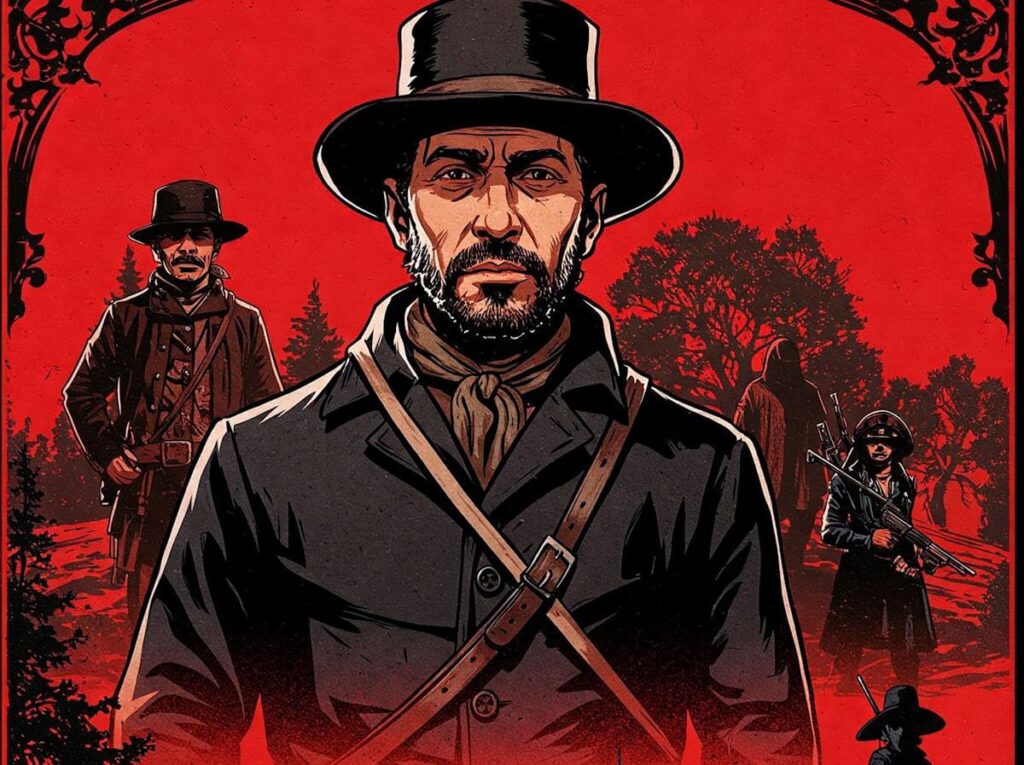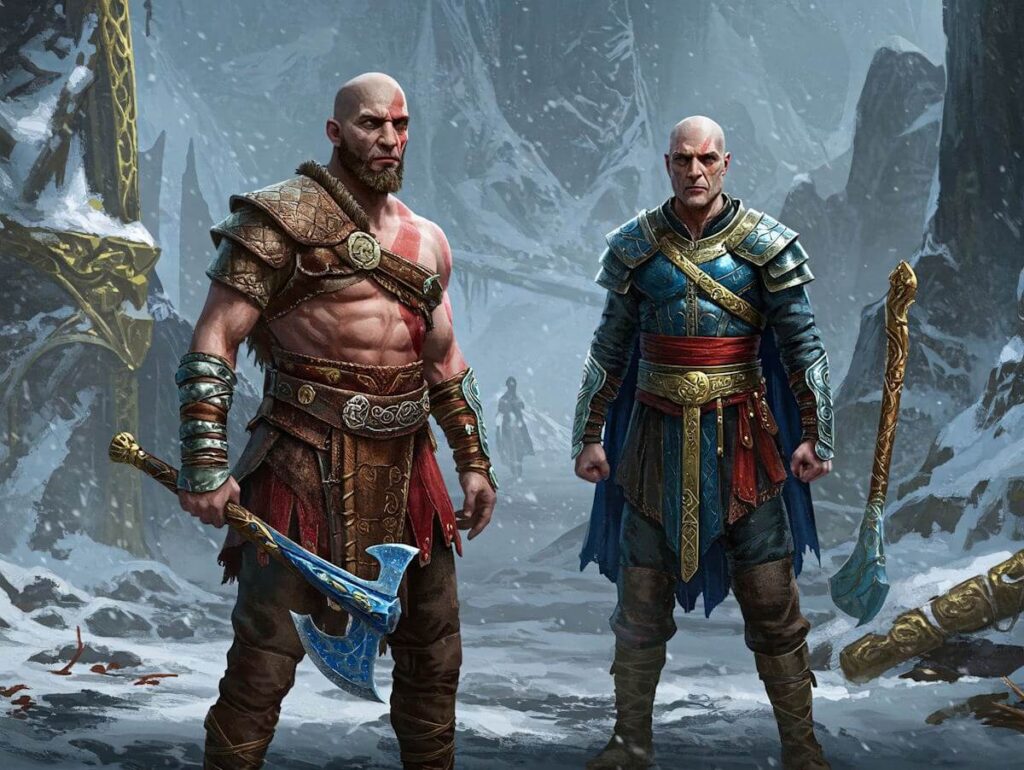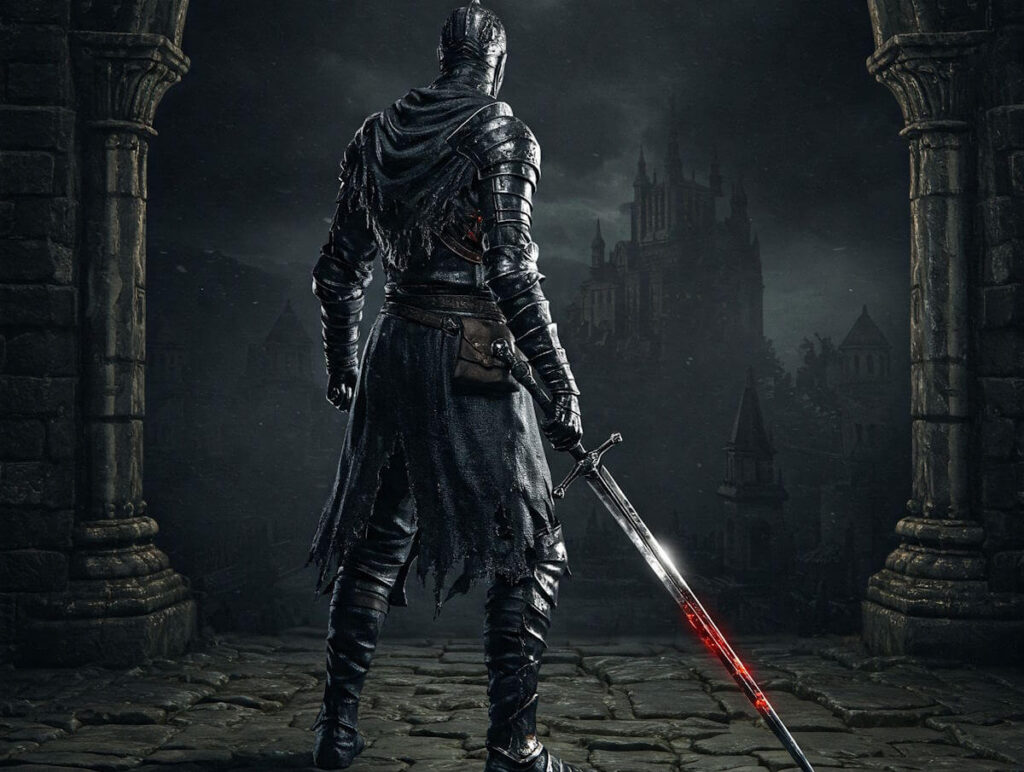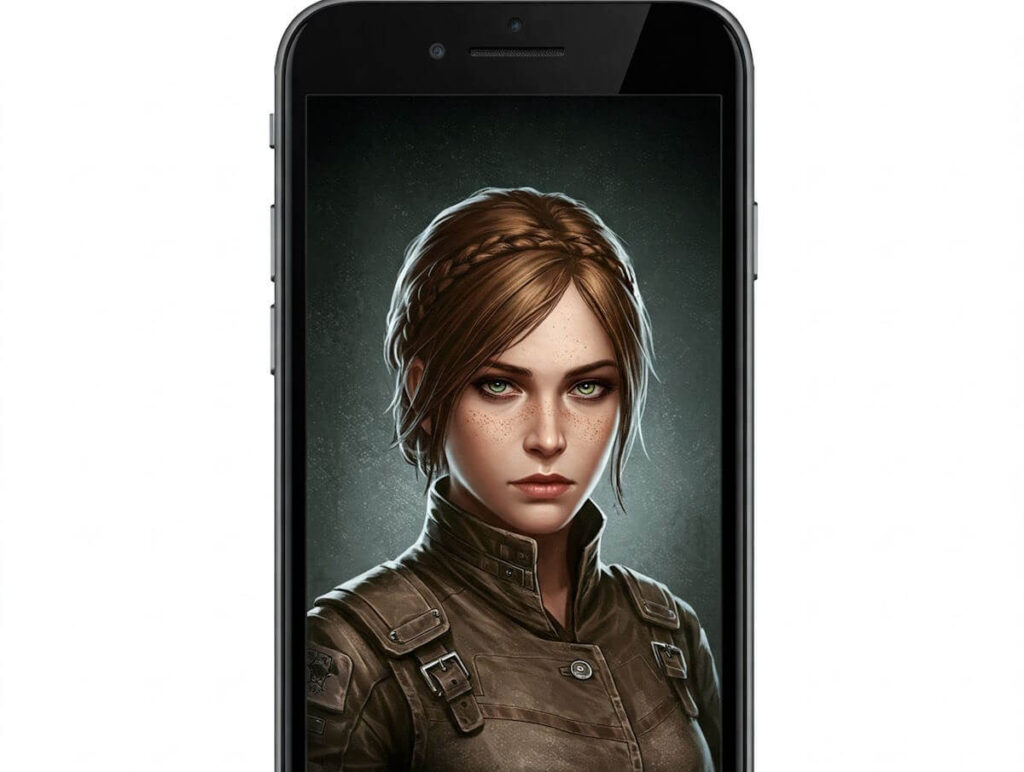Released on October 26, 2018, Red Dead Redemption 2 has established itself as a significant title in the gaming industry, garnering widespread acclaim from both critics and players alike. Developed by Rockstar Games, this action-adventure game offers a meticulously crafted open-world experience that immerses players in the late 19th century American frontier, a time characterized by both opportunity and uncertainty. With its breathtaking graphics, engaging gameplay mechanics, and a richly detailed world, the game has set a new standard for narrative-driven experiences in video games.
What truly sets Red Dead Redemption 2 apart is its commitment to storytelling. The game follows the journey of Arthur Morgan, a member of the Van der Linde gang, navigating through themes of morality, loyalty, and survival. Players encounter a complex moral landscape as they make choices that impact not only Arthur’s fate but also the lives of those around him. The narrative is woven with intricate character development and emotional depth, prompting players to reflect on their decisions as they progress through the game.
The game’s approach to storytelling is both immersive and multifaceted, exploring the dynamics of brotherhood and the struggles of pioneering life against the backdrop of a society in decline. The depiction of loyalty among gang members, contrasted with the harsh realities of survival in a changing world, forms the crux of the game’s thematic exploration. Through expertly crafted dialogue and rich character arcs, Red Dead Redemption 2 invites players to ponder profound questions about human nature and the moral choices that define us.
Setting and Historical Context
Red Dead Redemption 2 is set against the richly detailed backdrop of the late 1800s American frontier, a period marked by significant social change and territorial expansion. This era, often romanticized as the Wild West, evokes images of vast landscapes, lawlessness, and the relentless pursuit of fortune that characterized the lives of many individuals. The game’s creators meticulously crafted this setting to authentically reflect the tumultuous nature of American history during that time.
The historical context in which Red Dead Redemption 2 is situated is crucial for understanding the motivations and choices of its characters. As the United States expanded westward, numerous conflicts arose, particularly between settlers and Indigenous peoples, as well as among different factions vying for control of territory and resources. This backdrop of violence and lawlessness is powerfully illustrated in the game, enriching the narrative experience. The characters find themselves navigating a world that is often hostile and unpredictable, forcing them to make difficult decisions driven by survival and loyalty.
The cultural elements embedded in this setting also play a vital role in shaping the storyline. The values and struggles of the era, including the quest for personal freedom and the moral dilemmas faced by outlaws, are central themes that drive the plot. Each character embodies various facets of the American experience during this period, reflecting both the ambitions and the inevitable consequences of their actions. The intertwining of historical events, such as the rise of railroads and the displacement of Native American tribes, provides a lens through which players can examine the characters’ development and overall narrative arc. In doing so, Red Dead Redemption 2 transcends mere entertainment, serving as a thought-provoking exploration of a pivotal time in American history.
Character Development and Arcs
Red Dead Redemption 2 is richly woven with multifaceted character arcs that not only drive the narrative forward but also evoke profound emotional responses from players. At the heart of these arcs is Arthur Morgan, whose journey of self-discovery unfolds against the backdrop of loyalty, betrayal, and moral ambiguity. As the game progresses, Arthur grapples with his role within the Van der Linde gang while facing the consequences of his actions. His internal conflicts manifest through critical decision-making moments, allowing players to steer the course of his character. These choices significantly impact Arthur’s morality and ultimately shape his fate, highlighting the game’s emphasis on agency in narrative storytelling.
Another pivotal character is Dutch Van der Linde, the charismatic leader whose initial idealism gradually deteriorates into desperation and paranoia. As players delve deeper into Dutch’s psyche, it becomes evident that his complex personality is defined by a juxtaposition of visionary leadership and troubling moral choices. Throughout the game, players witness Dutch’s relationship with Arthur evolve from a bond of trust to one fraught with tension, illustrating the fragility of loyalty amidst chaos. Dutch’s changing demeanor emphasizes the intricate dynamics within the gang and the psychological toll of their lifestyle, providing layers of depth to his character arc.
Lastly, John Marston, the protagonist of the original Red Dead Redemption, serves as both a pivotal character and a bridge between narratives. His evolution from a gang member to a family man underscores themes of redemption and sacrifice. As players make choices affecting John’s development, they experience the weight of his past and the efforts he makes to forge a better future. The connection between John and Arthur amplifies the emotional stakes, leaving a lasting impact on players. Each character’s journey in Red Dead Redemption 2 intricately ties into the overarching narrative, providing players with a rich tapestry of choices and consequences that resonate deeply long after the game concludes.
Themes of Morality and Redemption in Red Dead Redemption 2
Red Dead Redemption 2 serves as a profound exploration of morality and redemption, compelling players to navigate a world filled with nuanced moral dilemmas. Set in the late 1800s, the game places players in the shoes of Arthur Morgan, a member of the infamous Van der Linde gang. As the story unfolds, players encounter a series of complex choices that significantly impact the narrative, relationships, and ultimately, the fate of the characters involved. These choices challenge players to confront their moral compass, forcing them to ponder the consequences of their actions.
The concept of redemption is intricately woven into the lives of the characters, particularly Arthur Morgan. As a character plagued by guilt and introspection, Arthur’s journey is a poignant reflection of the broader human experience of seeking forgiveness and atonement. Throughout the game, players witness Arthur grappling with his past decisions, which often reflect a morally ambiguous reality. The stark contrast between right and wrong blurs, presenting choices that may not have clear repercussions. This ambiguity encourages players to deliberate deeply about what constitutes a righteous path.
Moreover, the game invites players to question whether true redemption is attainable or merely an ideal. Characters such as John Marston and Dutch Van der Linde further exemplify this struggle, showcasing how the pursuit of redemption can lead to self-discovery or, conversely, despair. Their narratives underline the overarching themes of guilt and the quest for forgiveness in a world that is constantly testing their integrity. Ultimately, Red Dead Redemption 2 illustrates the profound complexities of morality. It challenges players to reflect on their own ethical beliefs and choices as they traverse through a richly crafted universe marked by moral ambiguity and the quest for redemption.
Narrative Structure and Gameplay Integration
Red Dead Redemption 2 is distinguished by its innovative narrative structure, which intricately weaves storytelling into the fabric of gameplay mechanics. The game employs a nonlinear narrative that allows players to explore an expansive open world filled with a rich tapestry of characters and events, each contributing to the overarching plot. This approach not only enhances immersion but also fosters emotional connections with the characters, ultimately creating a more profound gaming experience.
The missions in Red Dead Redemption 2 are essential to the development of its narrative. They are designed to draw players into Arthur Morgan’s journey and reflect the complex moral dilemmas he faces as an outlaw in a rapidly changing world. Each mission is accompanied by dynamic cutscenes that provide context and depth to the story, ensuring that players remain engaged in the character’s development. Moreover, the integration of side quests and random encounters enriches the narrative further, allowing players to engage with the world beyond the main storyline, thereby deepening their understanding of various characters and their motivations.
These side quests often present players with choices that affect the outcome of certain events, emphasizing the importance of player agency. Such choices add layers to the narrative, encouraging players to consider the implications of their actions. Random encounters contribute to this seamless narrative integration as they provide spontaneous interactions that can alter player relationships, influence quest outcomes, or simply enhance the atmosphere of the game world. This interactivity helps to create a living, breathing environment that feels alive and responsive to player input.
In conclusion, the narrative structure of Red Dead Redemption 2, coupled with its gameplay mechanics, creates a cohesive storytelling experience that captivates players and enhances their emotional investment in the characters and events. This synergy between narrative and gameplay sets a new standard in storytelling within the gaming industry, demonstrating the potential of interactive narratives in engaging players on multiple levels.
Role of Side Characters and NPCs
In the expansive world of Red Dead Redemption 2, side characters and non-playable characters (NPCs) play a crucial role in enriching the overarching narrative. These characters, while not central to the main storyline, offer invaluable context and depth that profoundly impact players’ understanding of the game’s environment and themes. By interacting with various side characters, players are invited to explore the socio-economic dynamics and moral complexities of the late 19th-century American frontier, which may not be fully captured through the primary narrative alone.
Each encounter with a side character or NPC serves as a narrative device that sheds light on the lives of ordinary people, illustrating the harsh realities of survival and companionship amid the chaos of the times. For instance, characters such as the struggling families, outlaws, or townsfolk reflect the various facets of human experience, showcasing both resilience and vulnerability. Through their stories and interactions, players gain insights into the different moral choices confronted by individuals in a world marked by lawlessness and uncertainty.
Moreover, these encounters often echo the game’s central themes of loyalty, betrayal, and the quest for redemption. As players engage with the numerous side narratives, they encounter dilemmas that resonate with the decisions made by the protagonist, Arthur Morgan. These moments not only enhance the emotional resonance of the main story but also immerse players further into the intricate tapestry of relationships that define the Van der Linde gang and their eventual fate.
Characters like Sadie Adler and Charles Smith exemplify how side characters can shift from peripheral figures to essential components of the narrative arc, enriching character development and enhancing emotional depth. Their stories complement Arthur’s journey, reinforcing the idea that every individual’s struggles are interwoven within a broader collective experience, ultimately contributing to the rich and immersive storytelling that Red Dead Redemption 2 is renowned for.
Symbolism and Foreshadowing
In the intricate narrative of Red Dead Redemption 2, symbolism and foreshadowing serve as essential narrative devices that significantly deepen the storytelling experience. One of the most prominent symbols is the changing landscape, which mirrors the protagonist’s journey and the inevitability of progress. As players traverse various environments, from the snow-capped mountains to the lush valleys, they witness the dynamic interplay between nature and human encroachment, emphasizing the shifting tides of the Wild West. This changing scenery stands as a metaphor for the transition from a lawless frontier to an era dominated by civilization, suggesting the characters’ fates are intertwined with this evolution.
Another key motif is the passage of time, which is intricately woven into the game’s structure. This theme is suggested through the cyclical nature of events, such as seasons changing and the lifespans of characters, further underscoring the transience of life. The game often utilizes weather patterns and daylight as foreshadowing elements; ominous storms may signal approaching danger, while the warmth of a sunset can hint at fleeting moments of peace. This passage of time not only enriches the narrative but also allows players to anticipate future developments, preparing them emotionally for the story’s evolution.
Moreover, certain locations and objects within the game carry profound symbolic weight. For instance, the dilapidated camp serves as a constant reminder of the gang’s former glory and the life they once led, highlighting their inevitable decline. Similarly, objects such as Arthur’s journal become tools for introspection, representing his internal struggles and growth. These layers of symbolism and foreshadowing intricately connect the characters’ personal stories with the game’s broader themes, cultivating a rich narrative tapestry that engages players and enhances their overall experience.
Critical Reception and Impact on Gaming
Upon its release in November 2018, Red Dead Redemption 2 was met with widespread critical acclaim, with many reviewers praising its immersive narrative, compelling characters, and stunning graphical fidelity. The game garnered numerous awards, including several Game of the Year accolades from various gaming publications and organizations. This recognition not only solidified its place in the industry but also showcased the potential for video games to deliver rich and intricate storytelling, traditionally reserved for film and literature.
Players responded enthusiastically to the game’s depth, with many citing the emotional weight of the narrative, which explores themes of loyalty, morality, and redemption in a meticulously crafted open world. The attention to detail in both storytelling and character development encouraged players to form emotional connections, sparking discussions around narrative-driven gameplay. Such conversations highlighted a growing demand for more substantial storytelling elements within the gaming landscape.
The impact of Red Dead Redemption 2 extends beyond its initial launch, as it has become a reference point for future game developers aiming to craft narrative-rich experiences. Its success has inspired countless conversations regarding the evolution of storytelling in video games, challenging the industry to deliver more profound and impactful narratives. The game has established a benchmark, encouraging creators to explore complex character arcs and moral dilemmas, pushing the boundaries of what can be achieved within interactive media.
Moreover, Red Dead Redemption 2 has influenced both indie and AAA titles in their approach to storytelling, leading to an increased emphasis on narrative structure and character development. As a result, the game not only reshaped the expectations of players but also fostered a more sophisticated dialogue surrounding the power of narratives in gaming experiences.
Conclusion: The Legacy of Red Dead Redemption 2
As we have explored throughout this discussion, Red Dead Redemption 2 stands as a pivotal achievement in the realm of narrative-driven gaming. The depth of its storytelling, woven through the lives of its characters, demonstrates a mastery of emotional engagement and complex moral themes. From Arthur Morgan’s journey of redemption to the exploration of loyalty, betrayal, and the passage of time in a changing world, the game narrates a tale that resonates deeply with players. The craftsmanship in its narrative construction is a testament to Rockstar Games’ dedication to gaming as an art form.
Each facet of the game contributes to an immersive experience that encourages players to confront their own values and decisions in a morally ambiguous environment. This reflection is not merely a function of gameplay mechanics but serves as a core aspect of what makes Red Dead Redemption 2 such a significant entry in modern gaming history. The attention to detail, richly developed characters, and intricate plotlines solidify its place in discussions surrounding the evolution of narrative design in video games.
The legacy of Red Dead Redemption 2 can be seen not only in its commercial success but also in the dialogues it sparks within the gaming community. Players continue to discuss its themes, characters, and moral implications, endlessly analyzing its narrative layers long after the credits roll. Such engagement is a clear indication of the game’s profound impact, ensuring that it will be remembered as a hallmark of sophisticated storytelling for years to come. For those who haven’t yet explored its vast world, now is the time to immerse oneself in Red Dead Redemption 2. By engaging with its complex narrative, players can gain a deeper appreciation of why this game has captured the hearts and minds of so many, cementing its legacy in the pantheon of gaming excellence.





